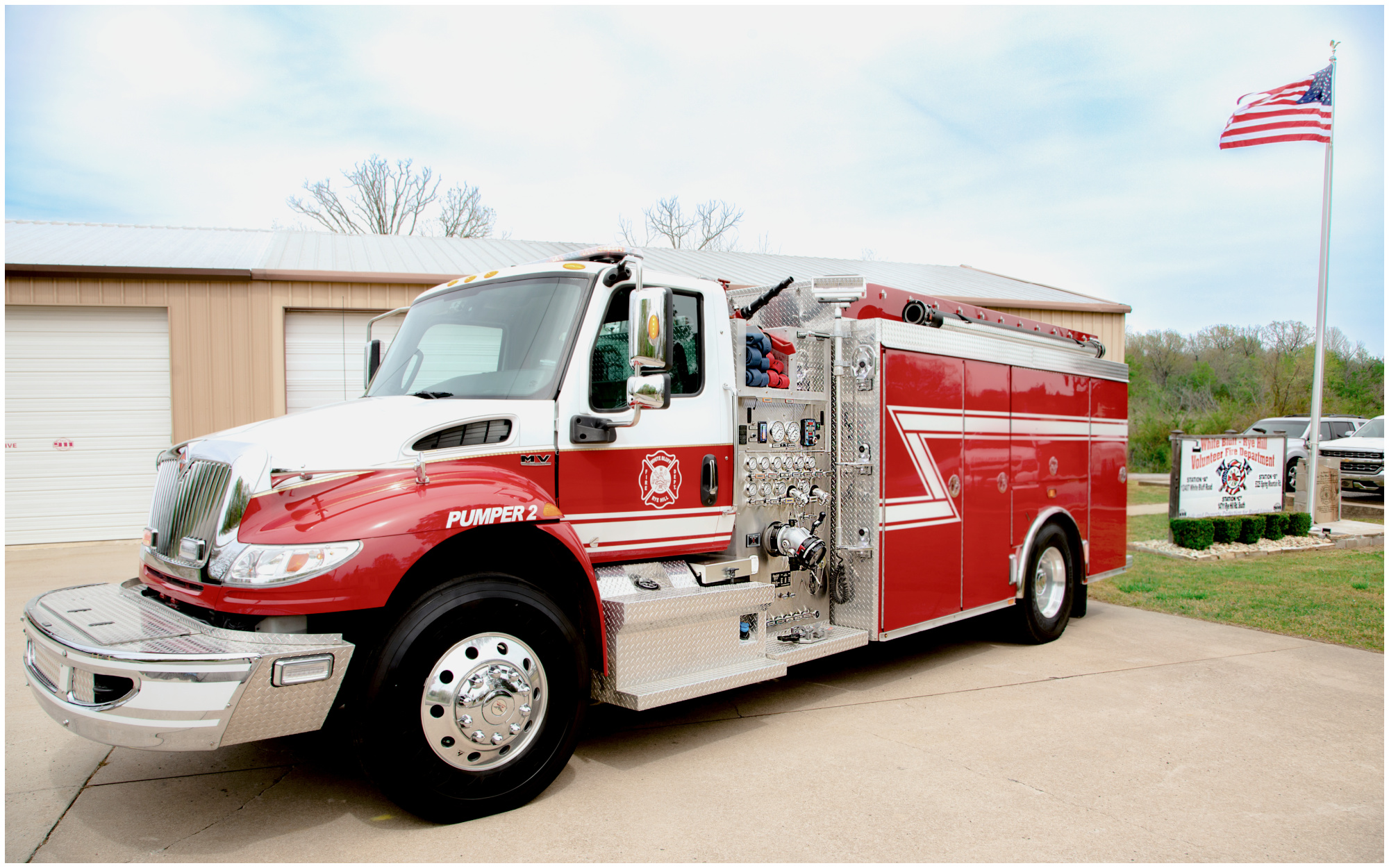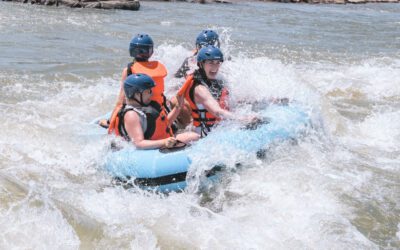They say blood is thicker than water, but the connection that Dale Seiter and Gary Lawrence share goes beyond that well-worn idiom. The two men, both of whom are in their mid-fifties and live and work in the communities where they grew up, are not related except in a unique sense that goes well beyond genetics.
Dale and Gary both have devoted decades to their respective communities, protecting life and property as volunteer firefighters.
“I’ve always been somebody who felt drawn to help people,” Dale says. “I was just raised to help people and be there and give one-hundred-percent effort in everything I do. My father and mother taught me if you do something, do it right and do it right the first time. If somebody asks for help, I’m going to be there.”
“My dad started our department here in 1970,” says Gary. “I was raised around it and just really enjoyed it, enjoyed the fire trucks, the lights, and the siren, all that good stuff. When I got old enough to officially join the department, I did, and I’ve stuck with it ever since. I still love it.”
The two men’s avocation continues a proud tradition that has saved countless lives and untold dollars’ worth of property dating back to the earliest days of the United States. Per thefirehousepress.com, the first firefighting measures were made up of men, women and children within a settlement forming a bucket brigade. These tactics were called into service regularly as roofs constructed of thatch and open-flame heating and cooking made fire a constant hazard.
The earliest organized fire services were also of the volunteer variety, the first is credited to Benjamin Franklin in Philadelphia in the mid 1730s. Franklin wasn’t the only Founding Father to have been associated with firefighting, as John Hancock, Samuel Adams and Paul Revere all served in leadership roles in the volunteer fire service for their respective city.
Today, while the number of volunteer firefighters is down, they still represent the lion’s share of fire services in the country. Statistics released last year by the National Fire Protection Association state there are 677,000 volunteer firefighters in the U.S., down six percent, compared to 364,000 of the career variety, meaning full-time and paid, up two percent.
Volunteer fire departments are particularly critical to more sparsely populated areas. Of the roughly 29,500 fire departments open in the United States, only eighteen percent are entirely or predominantly staffed by career personnel, yet these operations protect seventy percent of the population. As these statistics clearly indicate, without the volunteer service of men and women on their own time, residents of small towns and rural populations would be left dangerously exposed.
For Gary and Dale, who began their careers in 1985 and 1989, respectively, much has changed from the days when they first cut their teeth at the local firehouse.
“We had very little equipment back then,” says Gary, assistant chief of the fifteen-member fire department in Huntington, Arkansas. “Most of it was government surplus-type equipment that we tried to make work. Seeing the changes and modernized equipment has been a big difference; we’ve really got some nice equipment now in this county and other locations I’ve been throughout the state. It’s really changed.
“I can remember back when our department had SCBAs [self-contained breathing apparatuses] but wasn’t allowed to use them because it cost to have them filled, and our little town simply didn’t have the money. So, we were told not to use them unless we just absolutely had to.”
The equipment isn’t the only thing that’s changed for the better over the years. Training has also evolved tremendously from Dale’s earliest years with the White Bluff-Rye Hill Volunteer Fire Department.
“Back then training was a lot less intense than it is now,” he said. “There are set requirements by the state of Arkansas, like most states. You must go through certain classes before you’re allowed to suit up and go into a burning structure. You must also complete certain classes before you’re supposed to be working on brush or wildland fires.
“I got my instructor certification through the Arkansas Fire Academy through Southern Arkansas University in Camden, Arkansas. I can now reteach classes that I’ve had through the Arkansas Fire Academy to other firefighters.”
Despite the critical role that volunteer fire departments play, many such operations have had difficulty recruiting new personnel to help provide emergency response. Gary said Huntington is holding its own, if getting older, while White Bluff-Rye Hill’s numbers have stayed steady by attracting women volunteers and establishing a junior firefighter program.
“We’ve got twenty-five firefighters right now, three of whom are women, and we’ve also got five auxiliary members,” says Dale, who’s the longtime president of the department. “The auxiliary is made up mostly of ladies or retired men that help at events or who show up on fire scenes and work the cool-down area.
“We’ve got two junior firefighters right now; you can’t legally be a firefighter until you’re eighteen in Arkansas, but through our junior program they can come to meetings, and they can participate in training. They can’t drive any vehicles and they cannot go into a burning structure, but they can help in what’s called the warm zone where the pumpers set up and help firefighters get their equipment on. And they can fight grass fires once they’ve been through wildland training.”
Firefighting is, obviously, a dangerous job and having done it for so long has given both Gary and Dale a long list of stories. Any firefighter, volunteer or career, who does the work as long as they have, has at least one near-miss story to tell.
“I fell through a floor and couldn’t get out,” Dale says. “Walking through, the floor changed directions on the floor joists. I fell through and everywhere I pushed, I kept falling through. My brother-in-law was inside the building at the same time, and he pulled me back up until I could get on some floor joists and crawl back out. By that time, the fire had come up all the way around me.”
“Probably twenty years ago, we dealt with one of the first meth labs that I’d ever been around,” Gary says. “We were called out to it and that was really a wake-up call. There were tanks of ether and everything else that they were using. I believe at the time it was the largest drug lab that had ever been found in the state of Arkansas.
“Later we were told with some of the stuff that was in there, it would have exploded if water had hit it. I’m not certain what all was in there, but it was a close call for a bunch of volunteers.”
Gary adds that such hazards have contributed to fewer people being willing to sign up and answer the call to join the volunteer fire department. This fact led him to head the Arkansas Rural and Volunteer Firefighters Association as president where he leads an organization striving to recruit more civic-minded individuals into departments all over the state.
“It’s worthwhile when you save a child or even just being there with a kid who’s upset because their parents have been injured, and you are there to reassure and console them,” he says. “Our fire chief has even helped deliver a baby – he’s helped save lives out of burning homes. I personally have helped with some accidents. There are a lot of things that have changed during my tenure of being on the fire department, but those are things that will always make it worthwhile.”
Learn more about becoming a volunteer firefighter in your community!
Arkansas Rural and Volunteer Firefighters Association, arvfa.net
5611 Meadowview Road, Huntington, Arkansas
Call 479.414.1732, or email info@arvfa.net.




